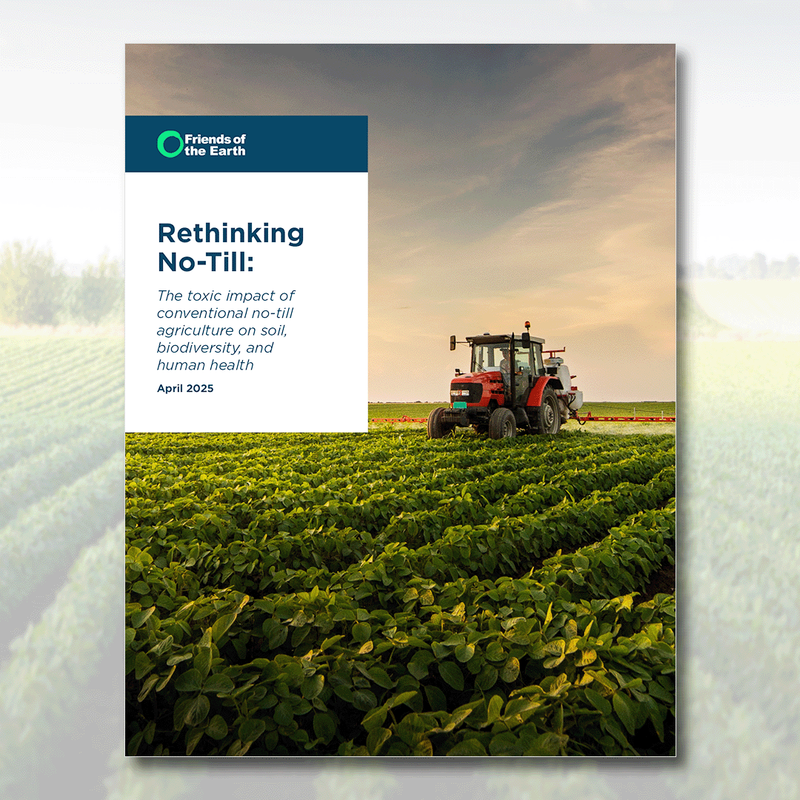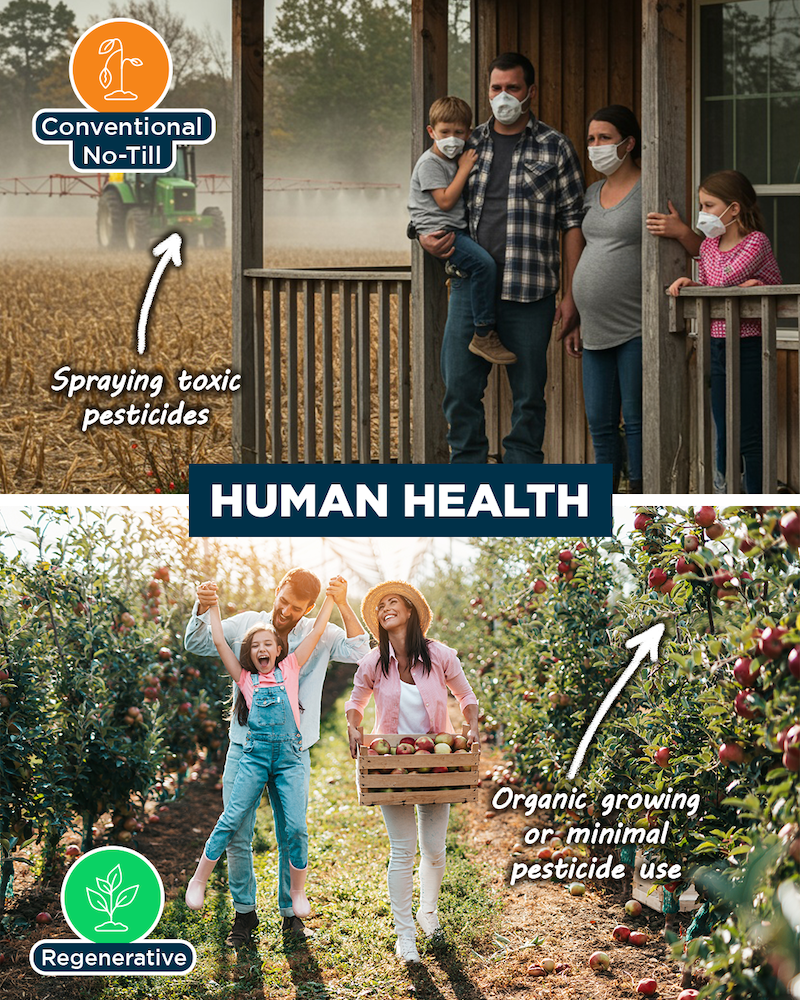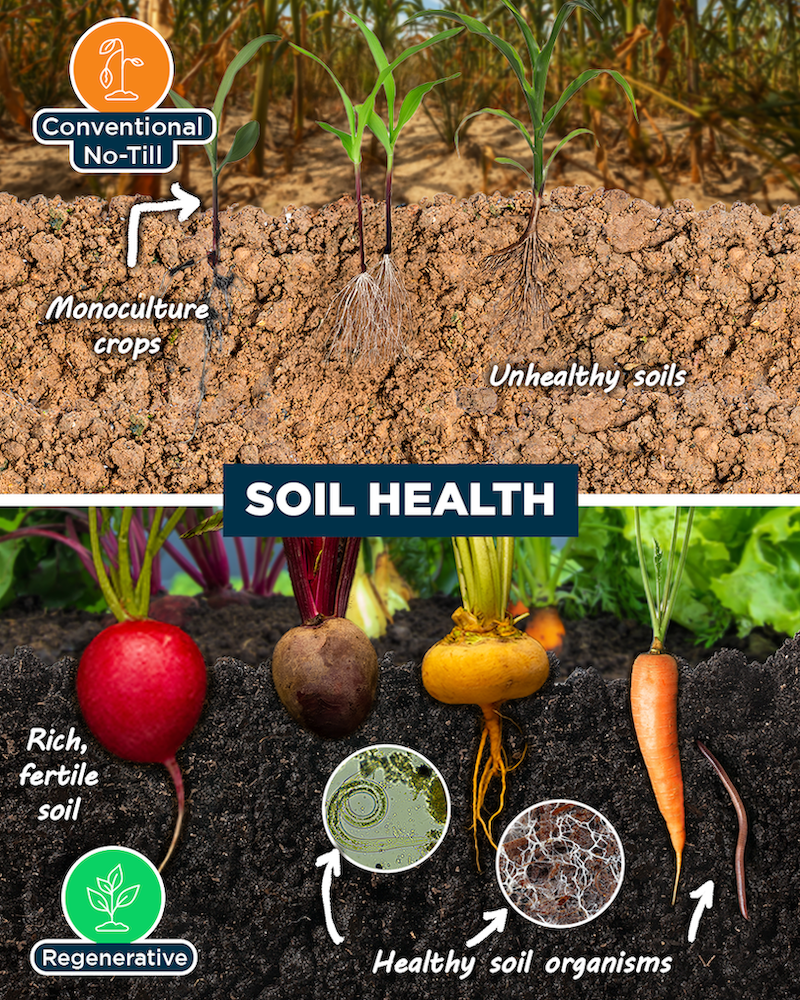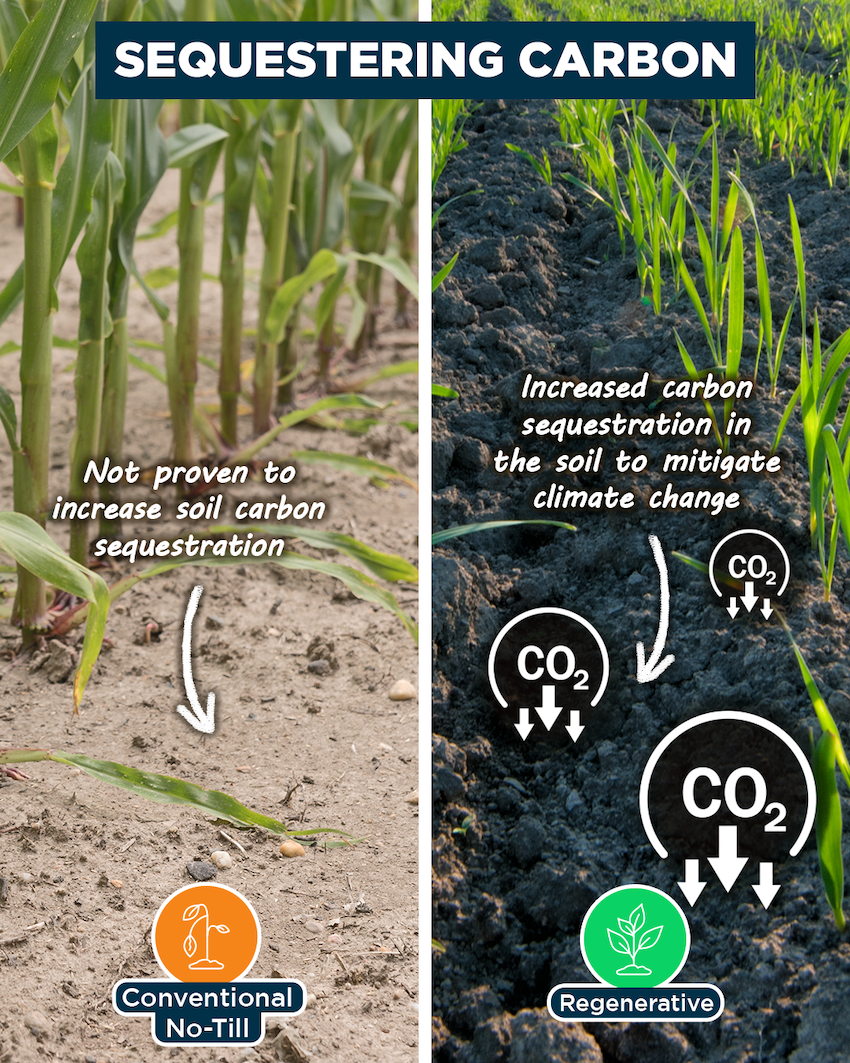
One-third of the US’s total annual pesticide use attributed to no- and minimum-till GM corn and soy. Report: Claire Robinson
A widespread narrative holds that tillage (ploughing) can increase greenhouse gas (GHG) emissions by disturbing the soil and releasing stored carbon dioxide (CO2) into the atmosphere, as well as potentially increasing nitrous oxide (N2O) emissions. GMO proponents often claim that GM herbicide-tolerant corn and soy have enabled uptake of no-till or minimum-till farming, saving soil from erosion, increasing carbon sequestration in soil, reducing GHG emissions, and thus contributing positively to “regenerative” farming.
This narrative is actually based on a myth because, as a US Dept of Agriculture report on the uptake of GM crops in the US notes, no-till acreage had already been steadily rising in the States before the introduction of GM crops and “using herbicide tolerant seed did not significantly affect no-till adoption” – that prior trend simply continued (although, as we shall see, it would fairly soon go into reverse). In fact, no-till first really took off in South America, most notably in Paraguay where it was in use on over half the total cultivated area years before any GM crop commercialisation even occurred there.
Regardless of its origins though, it is certainly the case that no-till agriculture in both North and South America does now overwhelmingly involve GM crops. But a new report from Friends of the Earth (FoE), Rethinking No-Till, refutes the widely held assumption that no-till automatically equals “regenerative”. Indeed, the report shows that not only does conventional no-till fail to solve the climate crisis, but it is part of the problem. The report also finds that most no-till systems are so heavily dependent on toxic herbicides to manage weeds that a staggering one-third of the US’s total annual pesticide use (a term that includes herbicides, insecticides, and fungicides) can be attributed to no- and minimum-till genetically modified corn and soy production alone.
The FoE report comes hot on the heels of a peer-reviewed study published in Nature Food, showing that GM crops have led to increased tillage and greenhouse gas emissions in US corn and soy. The study explains that GM herbicide-tolerant corn and soy only led to decreased tillage until 2008. After that, weed resistance led to increased tillage and accompanying greenhouse gas emissions. The study concludes, “As weed resistance persists or grows, tillage intensity is anticipated to continue rising, probably increasing GHG emissions. Our results imply that farmers’ choices in managing herbicide resistance may help mitigate agricultural GHG emissions, underscoring the importance of an alternative strategy to control weeds.” The new FoE report more than backs up this conclusion.
First-of-a-kind analysis
Based on a first-of-its-kind analysis of US Department of Agriculture (USDA) data, the FoE report says that chemical-intensive agriculture predominates in the US not through the fault of farmers, but because that is what public policies and markets support. Farmers have widely adopted no-till to minimise soil erosion and now must be supported to reduce agrochemical inputs.
The report finds that the vast majority (93%) of acreage of the top two no- and minimum-till crops, corn and soy, use toxic herbicides that have devastating consequences for soil life and human health. These chemicals, being broadcast across nearly 100 million acres nationwide, predominantly in the Heartland and Great Plains, have been linked to cancer, birth defects, infertility, neurotoxicity, disruption of the gut microbiome, endocrine disruption, and more. The majority (61%) of use is chemicals that are classified as highly hazardous. Glyphosate, the cancer-linked main ingredient in the widely criticised weedkiller Roundup, is the most widely used herbicide in no-till corn and soy.

The cost of chemical-intensive no-till goes beyond impacts on our health: It is also destroying the soil that grows our food. The pesticides widely used in no-till devastate soil health, harming the soil microbiome and invertebrates like worms and beetles, as well as essential pollinators and other wildlife. Healthy, living soil improves farmers’ resilience to droughts and floods, conserves water, and draws more carbon down from the atmosphere. Soil ravaged by toxic pesticides, on the other hand, threatens resources needed for a healthy food system.

Not a climate solution
The report debunks the faulty assumption that chemically based no-till is a climate solution, summarising extensive scientific research showing there is no clear relationship between no-till and soil carbon sequestration. And the greenhouse gas emissions associated with the fossil-fuel-based synthetic pesticides and fertilisers used in no- and minimum-till corn and soy are equivalent to that of 11.4 million cars on the road over an entire year — about the number of cars in the top nine no-till states combined.

“As regenerative agriculture takes centre stage in national conversations about how to make America healthy, it’s crucial that we advance truly regenerative agriculture,” said Dr Kendra Klein, deputy director of science at Friends of the Earth. She adds that "no-till, soaked in toxic pesticides that threaten our children’s health, ravage soil, and exacerbate climate change, is taking us in the wrong direction”.
The ascendance of no-till is linked to the GMO and chemical industry’s attempt to deepen farmers’ dependence on their toxic products. Companies such as Imperial Chemical Industries (ICI) and Chevron conducted no-till experiments and helped spread the concept of industrial no-till in the 1970s, recognising it as an opportunity to increase the market for their herbicides. Currently, GMO and pesticide giant Bayer is offering to pay farmers to practice no-till as part of their “regenerative agriculture“ program.
“Major food companies investing in regenerative agriculture need to avoid greenwashed conventional no-till and instead support the transition to legitimately regenerative agriculture that will protect soil health, human health — and their future bottom line,” said Sarah Starman, senior campaigner on food and agriculture with Friends of the Earth.
Truly regenerative agriculture cannot be boiled down to single practices – it works with the farming system as a whole. Research shows that careful tillage in holistic farming systems can achieve better soil outcomes than chemical-intensive no-till agriculture.
A central tenet of truly regenerative agriculture is dramatic reduction of harmful agrochemicals. Research shows that reducing use of synthetic pesticides and fertilisers in conventional agriculture is not only possible, but it can also increase yields by fostering beneficial insects and healthy soil and can increase profitability by reducing farmers’ input costs.
A leading form of truly regenerative agriculture is organic farming. And unlike the term “regenerative”, organic certification is enforced through rigorous legal standards. Decades of research shows that organic farms, on average, improve soil health, climate resilience, and soil carbon sequestration; reduce emissions; and protect biodiversity, human health, and community wellbeing.
Key findings of the report
* At least 93% of no-till and minimum-till corn and soy acreage in the US uses synthetic herbicides, representing an area the size of California (99.5 million acres).
* Herbicide use in no-till corn and soy can be associated with 33% of total annual pesticide use in the US — 285 million out of 851 million pounds of pesticides.
* The majority of use (61%) is herbicides classified as highly hazardous to human health and/or the environment — 173 million pounds.
* Glyphosate accounts for an estimated 40% of the total use of herbicides in no-till corn and soy.
* At least 26 million pounds of additional herbicides are used annually due to conventional no- and minimum-till management in corn and soy.
* At least 89% of conventional no- and minimum-till corn and soy acres rely on seeds genetically engineered to be herbicide tolerant.
* Neonicotinoid seed coatings are used on up to 100% of conventional no-till corn acreage.
* Fossil-fuel-based inputs to no- and minimum-till corn and soy in the form of synthetic pesticides and fertilisers can be associated with ~49.3 million metric tons of CO2-equivalent emissions.
* Conventional no-till production does not increase soil carbon and in some cases has been found to reduce it.
* Tillage is not universally detrimental to soil health and can be incorporated into regenerative farming systems.
The Friends of the Earth report
https://foe.org/resources/rethinking-no-till/
Images: Friends of the Earth










